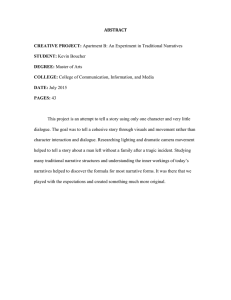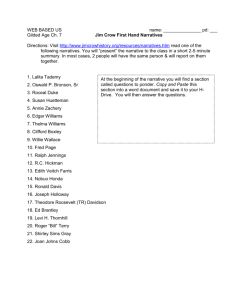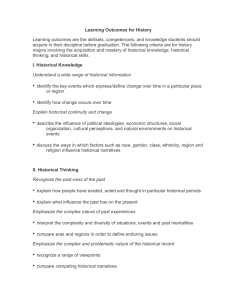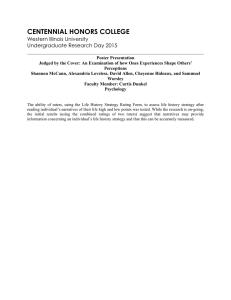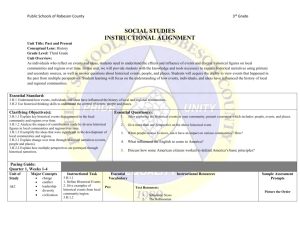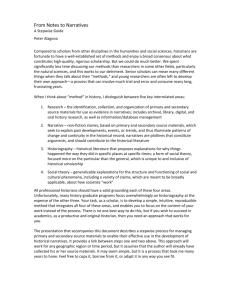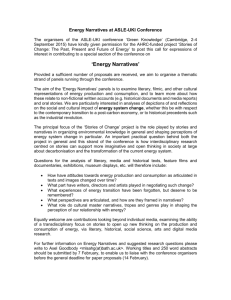narratives
advertisement
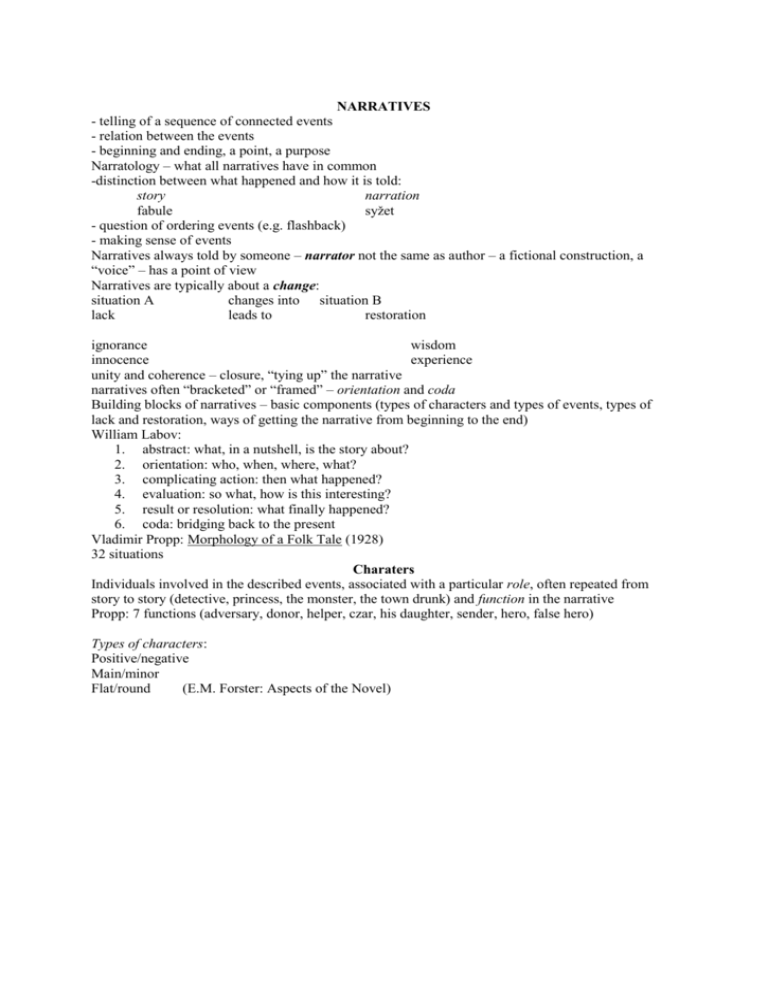
NARRATIVES - telling of a sequence of connected events - relation between the events - beginning and ending, a point, a purpose Narratology – what all narratives have in common -distinction between what happened and how it is told: story narration fabule syžet - question of ordering events (e.g. flashback) - making sense of events Narratives always told by someone – narrator not the same as author – a fictional construction, a “voice” – has a point of view Narratives are typically about a change: situation A changes into situation B lack leads to restoration ignorance wisdom innocence experience unity and coherence – closure, “tying up” the narrative narratives often “bracketed” or “framed” – orientation and coda Building blocks of narratives – basic components (types of characters and types of events, types of lack and restoration, ways of getting the narrative from beginning to the end) William Labov: 1. abstract: what, in a nutshell, is the story about? 2. orientation: who, when, where, what? 3. complicating action: then what happened? 4. evaluation: so what, how is this interesting? 5. result or resolution: what finally happened? 6. coda: bridging back to the present Vladimir Propp: Morphology of a Folk Tale (1928) 32 situations Charaters Individuals involved in the described events, associated with a particular role, often repeated from story to story (detective, princess, the monster, the town drunk) and function in the narrative Propp: 7 functions (adversary, donor, helper, czar, his daughter, sender, hero, false hero) Types of characters: Positive/negative Main/minor Flat/round (E.M. Forster: Aspects of the Novel)

